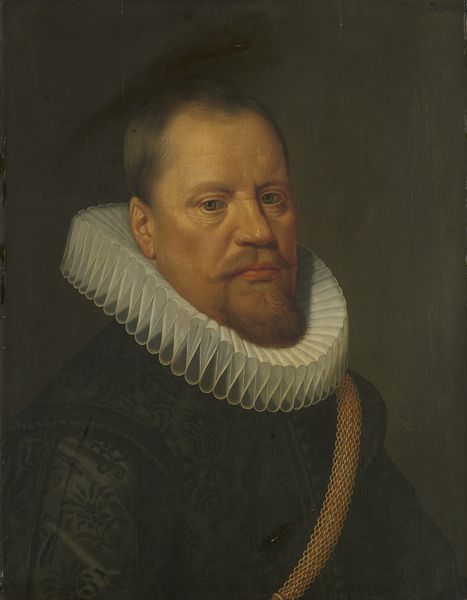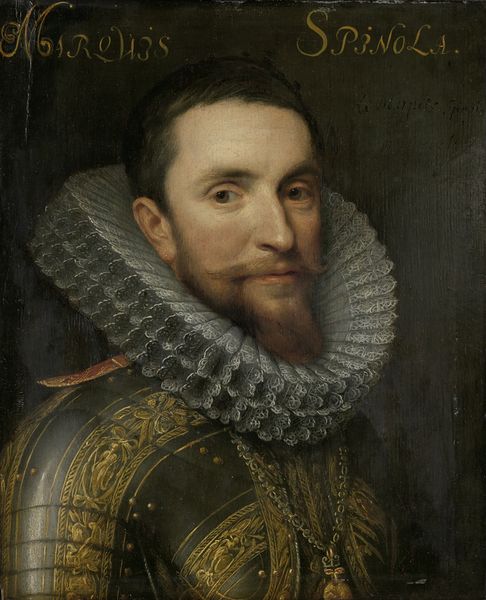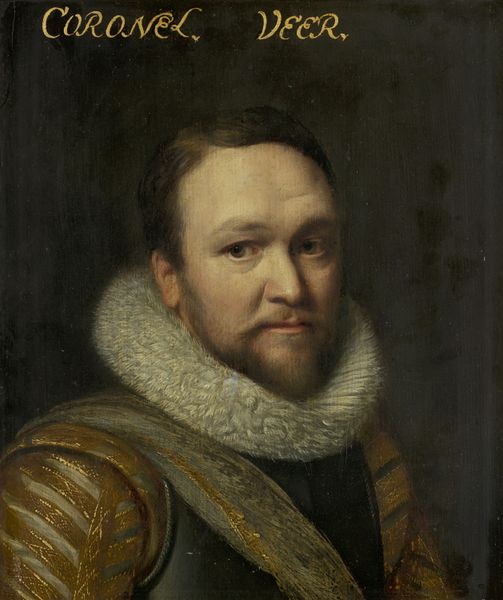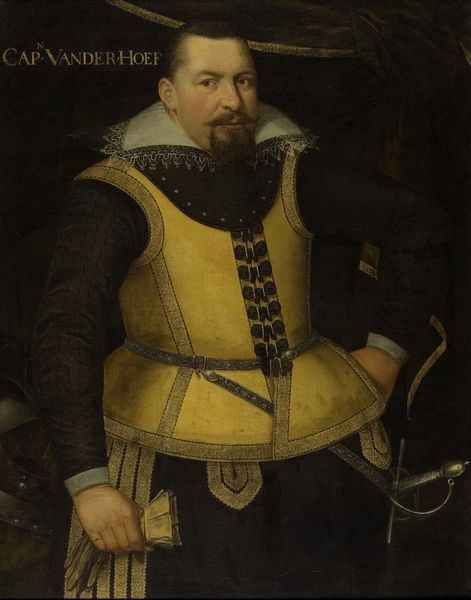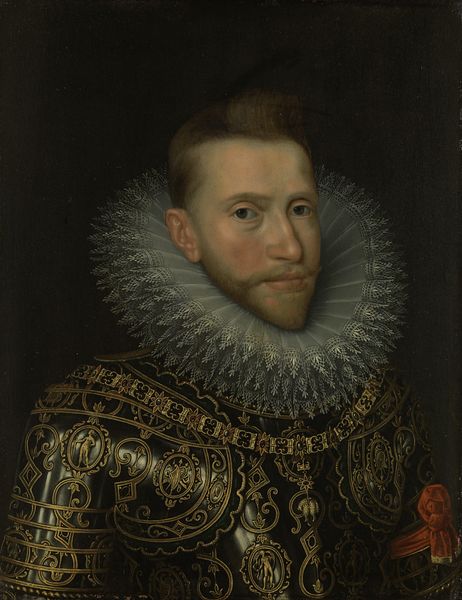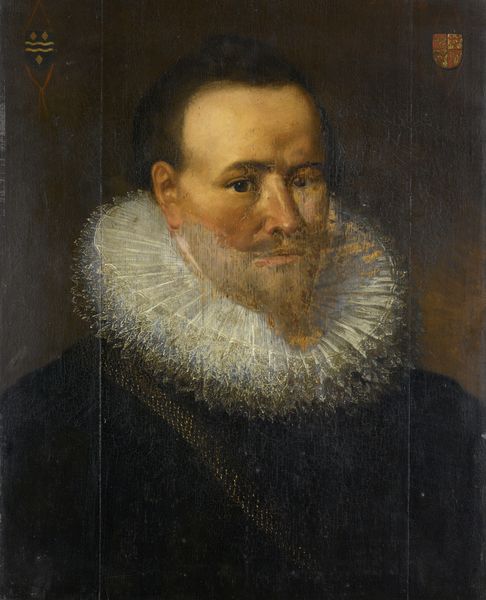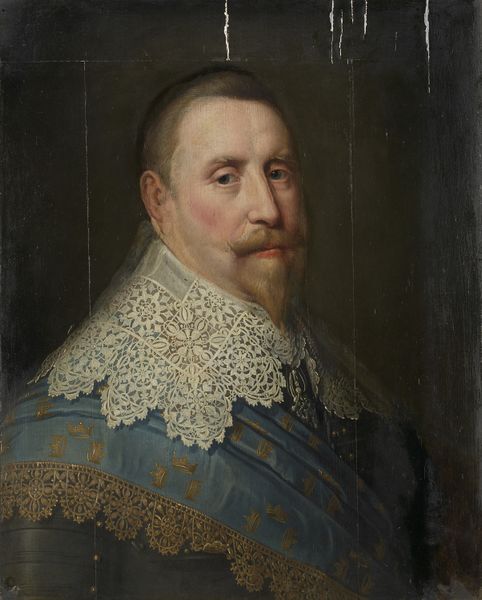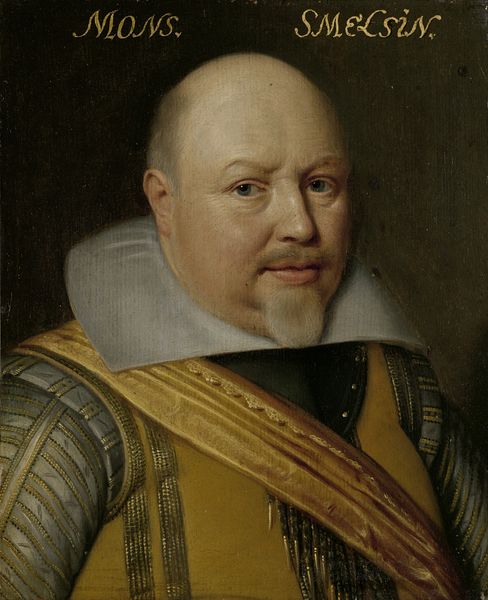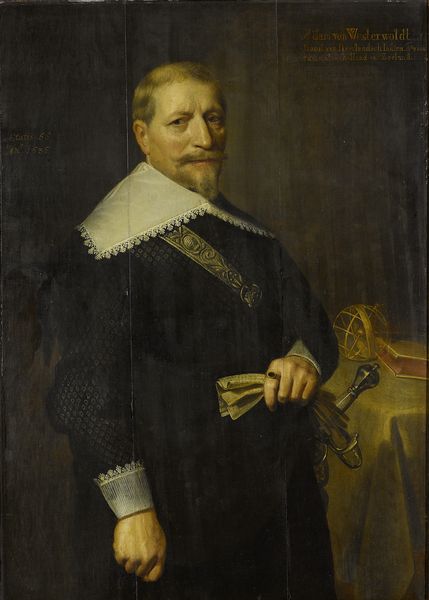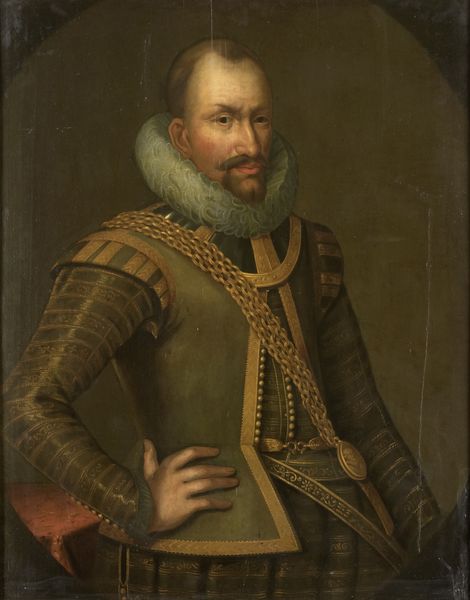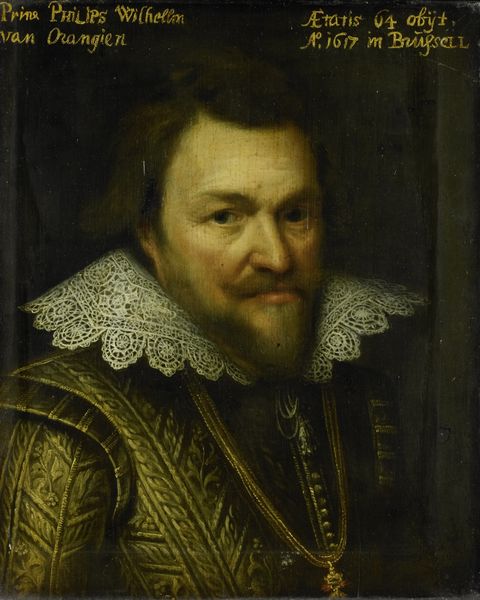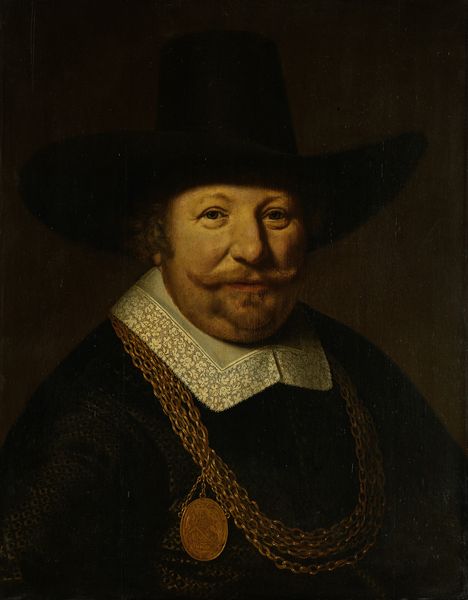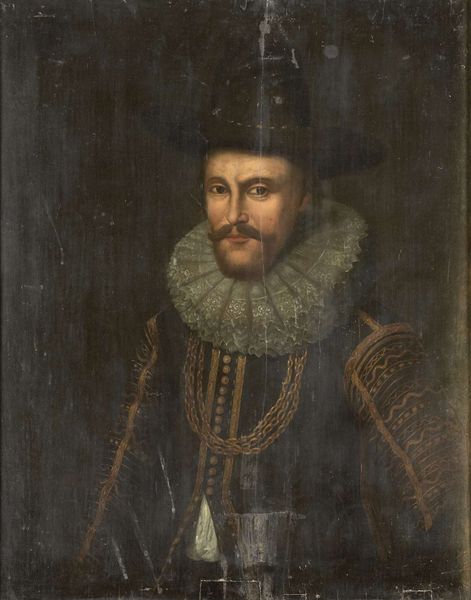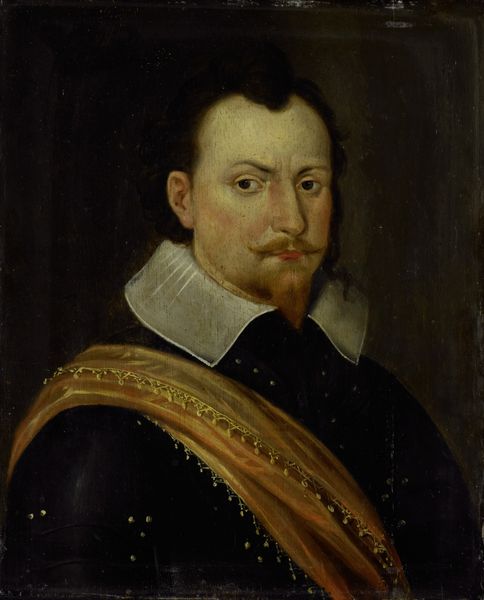
painting, oil-paint
#
portrait
#
narrative-art
#
baroque
#
painting
#
oil-paint
#
figuration
#
history-painting
#
academic-art
Dimensions: support height 65 cm, support width 50 cm, outer size depth 5.2 cm
Copyright: Rijks Museum: Open Domain
Curator: Here we have Jan Daemen Cool's portrait of Pieter Pietersz Hein, completed in 1629. Hein, a Dutch admiral, is captured in oil paint. What strikes you initially? Editor: The sheer opulence! But in a way that feels deliberately… restrained? The heavy gold chain and elaborate shoulder detailing on the dark doublet contrast so sharply with the almost stark white of that incredible ruff. Curator: That restraint speaks volumes about the socio-political climate. This wasn't simply about depicting wealth, but about conveying a very specific image of Dutch power during the Golden Age. Hein was a national hero. Editor: And how interesting to see those markers of status produced in oil on canvas. Who had the pigment? Who ground it? Where was the linen sourced? It’s easy to overlook the labor behind this portrayal of power. It even speaks to the division of classes. Curator: Exactly! Think of the workshops required for such detailed clothing. Daemen Cool strategically used these sartorial signifiers of status and power. Notice also the careful representation of his facial features: his skin, his beard, and those calculating eyes. This painting reinforced narratives of Dutch superiority. Editor: Yes, there’s such weight in his gaze. All those layers of paint and glazes, slowly building up that confidence. One can only imagine how long he sat still. The patience required from both subject and painter. Curator: And consider how this image circulated, further cementing Hein's legacy. It became part of the Dutch visual culture. The man and the myth. Editor: Absolutely. It's easy to admire the details, the textures achieved with oil paint. The more one learns, however, the clearer it becomes how intrinsically connected it all is: material choices, labour, politics, art... Curator: Precisely. Looking closer reveals so much about the power structures and cultural aspirations of the era. Editor: So, much more than just a pretty face on canvas. Curator: Indeed. An artifact of its time.
Comments
No comments
Be the first to comment and join the conversation on the ultimate creative platform.
